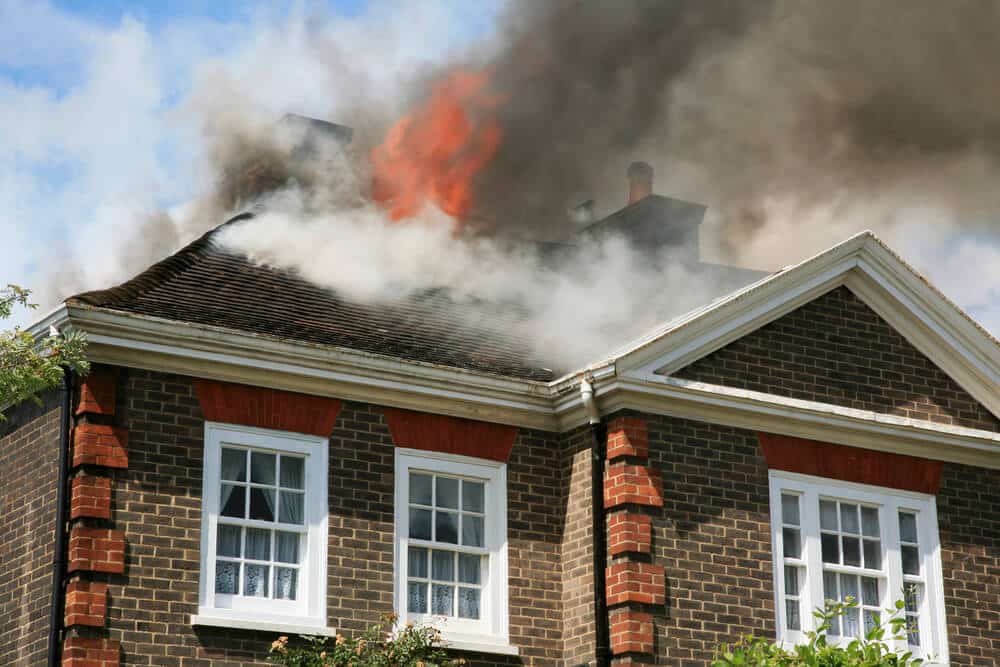As a property owner, you understand the importance of improving and protecting indoor spaces. Home and business owners alike take on the responsibility of regular maintenance and, when the unexpected happens, repairs, remediation, and rebuilding.
If your home or business recently suffered damage from a fire, you may feel uncertain about how to restore your property. When speaking to insurance and remediation experts, you may hear about various services, including cleaning, smoke removal, construction restoration, and encapsulation for fire damage remediation. The best defense is a good offense when it comes to preventing home attic fires, but sometimes things are out of our control.
These services target specific problems many property owners face after a fire. But what is attic encapsulation? Is this service necessary for remediating your home or business after a fire?
At Attic Projects, we help our clients make informed decisions during the fire remediation process. In this blog, you’ll learn what encapsulation is and some of the benefits of insulating your attic spaces in this fashion.

What Is Attic Encapsulation
When considering insulation for attic spaces, most property owners only imagine insulating the attic floor. This concept works well since, for many, the attic floor serves as a super-ceiling layer. However, the encapsulation works best for property owners who want to make the most of their attic spaces for storage, activity, or improved indoor temperature control. This can help existing homes as well as new home construction maintain the heating and cooling temperatures inside the interior climate zones.
Experts encapsulate attic spaces by installing insulation along the attic roof and wall spaces instead of the attic floor. This can often insulate the attic itself better than insulating the floor would.
Technicians may use any type of construction insulation such as rigid foam or spray foam insulation, batt or loose fill fiberglass insulation, or cellulose insulation to line your attic’s walls and ceiling. However, most opt to use spray foam insulation for better adhesion to vertical or hanging surfaces. This not only serves to prevent heat loss via air leaks but also aids with duct leakage and duct insulation.
The Need For Encapsulating Your Attic
Due to increased material and installation costs, many property owners hesitate to go through with getting an encapsulated attic. Many find themselves wondering if their homes or businesses truly need it.
In truth, encapsulation performs several functions for your property.
Encapsulation in new construction or remodel projects allows for more useable, temperature-controlled space within your property and helps protect you from fire and smoke damage.
Attic encapsulation for fire remediation has different goals. While restoration technicians use personal protective equipment, these projects still pose many risks to workers.
During and after soot removal, restoration companies often use encapsulation spray foam insulation to coat porous surfaces damaged by smoke. This keeps all soot contained within the attic for more manageable cleaning.
Depending on the type of fire and fire damage, fire damage restoration for your property may include encapsulation for smoke and contaminant protection and post-remediation sealants. These keep potential health hazards contained rather than letting them into the air you breathe.
Benefits of an Encapsulated Attic
In any home or business with an attic space, encapsulation provides an expansion of the building’s thermal envelope. The thermal envelope refers to the sealed area within your home or business. This space gains protection from outside temperatures through walls, windows, roofs, and insulation.
When your building has both strong basement insulation and attic insulation, you can enjoy more comfortable indoor air temperatures, lower utility bills, increased property value, and increased protection from fire damage.
Encapsulation after a fire also helps protect property owners and workers from harmful substances often released during a fire, including:
- Metals
- Acid gasses
- Carbon dioxide
- Sulfur dioxide
- Nitrogen oxides
- Soot
- Carbon monoxide
- And more
In addition, encapsulation for fire damage remediation also helps protect your home from future fires. While attic insulation material has flammable components, many types of insulation come rated to withstand a certain level of exposure to fire. That extra layer of defense can be the difference between saving and losing a property.
Reach out to Attic Projects today to get great information about more options and the best choice we can provide for your property before or after fire damage.
FAQS – Attic Encapsulation
If your restoration plan includes encapsulation for fire damage remediation, you may have many questions about the process. Read on to find answers to some of the common questions property owners have about post-fire encapsulation. You can also reach out to our friendly team for personalized responses.
Is Attic Encapsulation Worth It?
Yes. Encapsulating your attic helps protect your home or business from fluctuating outside temperatures by building a thermal envelope, reducing utility bills, and more. While the benefits may not seem immediately apparent when considering the investment, over time having your attic encapsulated pays dividends.
How Much Does It Cost?
The cost of having your attic encapsulated will vary depending on the size of your attic, the materials used, and why your attic needs encapsulation. The prices for this procedure range from just a few hundred dollars to well into the thousands. Before committing to one company for installation, it’s wise to shop around and compare estimates.
Restoration companies may include encapsulation for fire damage remediation in initial service quotes. Expect to pay a few thousand for spray insulation materials, labor, and other related fees.
Should an Attic Be Completely Sealed?
Yes. Ideally, property owners should have attic spaces completely sealed. Sealing, for many reasons, provides increased comfort and energy efficiency in your home, saving money on bills. Making sure that the attic is air sealed can help with the efficiency of your HVAC system, air leakage, and retaining conditioned air within the home.
Sealing becomes especially important after fire damage. Once technicians clean all damaged surfaces, they use special chemicals to seal porous surfaces. This restores any insulation or structural integrity that has been lost, keeping the attic functional.
Conclusions
If your home or business recently incurred fire damage, you may face a long restoration process. Encapsulating your attic as a means of fire damage remediation plays a critical role in this process. Encapsulation streamlines property restoration and protects properties from future fire damage.
Navigating property restoration after a severe fire presents many challenges, but you don’t need to face it alone. With guidance from trained professionals and expert remediation services, your home or business will be safe and functional once more.
Don’t wait. Get attic encapsulation and other high-quality attic services by reaching out to our Attic Project locations in either Orange County or San Diego today. We’re happy to answer any questions you have about encapsulation and help determine if it’s right for you.
Recommended Article: How Smoke Damage Restoration Works?




